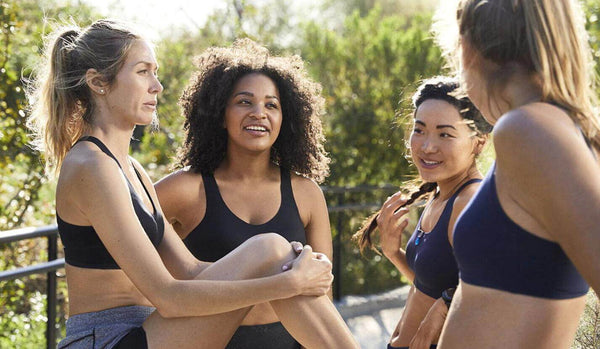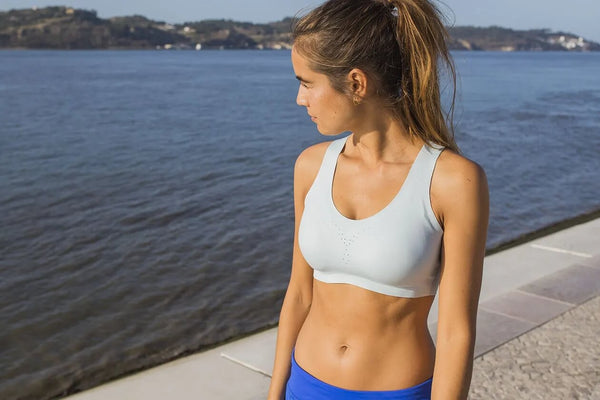As I was running around Druid Hill Park this past weekend, I noticed something disturbing: A considerable number of women run without a good sports bra. Watching them is painful.
Why are sports bras important?
Physical activity can make your breasts go up, down, and even into a figure-8 shape. Sustained and repetitive movements can cause pain, aches and sagging.
Sports bras are designed to reduce this movement. Breasts have no muscles, but without proper support, the skin and Cooper's ligaments (ligaments near the breasts that give them size and shape) can break down, causing them to sag. Once your Cooper's ligament stretches, there is no rebound.
Everyone experiences jumping during physical activity, no matter how big your boobs are. Therefore, every woman, no matter what size she is, should wear a sports bra when running or exercising.

Types of Sports Bras
Compression bras work just like they're pronounced, limiting movement by squeezing the breasts against the chest.
Encapsulated bras have individual cups. Each cup surrounds and supports each breast. Most regular bras are encapsulated and have no compression.
Combination compression/encapsulation bras combine compression with a single cup for maximum support.
Bra tank tops, also known as shimmels, are tank tops with built-in bras. These are fine for low-intensity activities, but not for running.
Finally, the straps are also different. Spaghetti straps provide less support than wide straps. Racing straps are more supportive than spaghetti and scoop backs.

Fitted sports bra
You want a sports bra that fits both the straps and the cups. Overall, your sports bra should feel a little tighter than a regular bra, however, you should be able to breathe deeply and be comfortable. Sandwich it in between and take a deep breath. Is this comfortable? Good. it should be.
The band should not move. Fit and comfortable. Raise your hands above your head. Did the rubber band move? If it crawls into your ribcage, try a smaller strap. If the bra has straps, try adjusting it.
Your breasts should not be bulging, pay close attention to any bulge at the top or under the arms. Also, the cup should not have any wrinkles or gaps. If the cup cloth is wrinkled, try a smaller size.
Make sure there is no rubbing or chafing around the armholes, straps, seams, hooks, hooks, or anything else. Many sports bras offer adjustable straps. Adjust them so they feel supported, not uncomfortable. Also, make sure the straps are not digging into your shoulders.
The underwire should rest flat on the ribs, not on the chest. The front (between the wires) should be close to the sternum.
Fortunately, most of the latest sports bras use high-tech fabrics, including moisture-wicking ones. This improves breathability and helps remove excess moisture from sweat, which can cause skin irritation. Cotton bras will keep you moist, which can cause skin discomfort.
For the final step, jump up and down, jog in place, and do jumping jacks. If you feel supported, you can! If not, keep looking.
